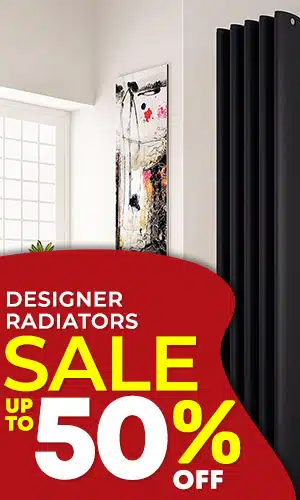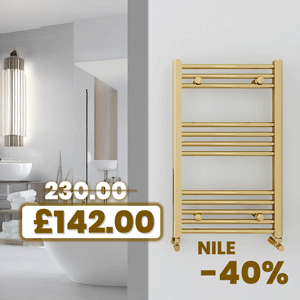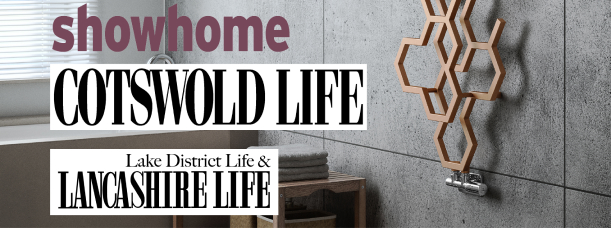Achieving both comfort and efficiency in your heating system starts with choosing the right radiator. Among the most popular options today are Aluminium and Steel radiators, which differ significantly in terms of materials and performance. In this guide, we’ll cover the technical features, advantages, and disadvantages of both options to help you determine the best fit for your home or workplace.
Material Choice in Radiators: A Key Factor for Performance and Durability
Let’s explore the most important technical differences between aluminium and steel.
Thermal Conductivity
Aluminium: With a thermal conductivity of around 205 W/m·K, aluminium spreads heat rapidly and warms a room quickly. It’s ideal for areas that require fast heating, such as bathrooms or large living rooms.
Steel: Steel has an average thermal conductivity of about 50 W/m·K, meaning it heats more slowly. However, its ability to retain heat longer and distribute it evenly makes it well-suited for spaces requiring stable temperatures.
Energy Efficiency
Aluminium: Thanks to rapid heat transfer, aluminium radiators can save 15–20% in energy. They operate efficiently at lower temperatures in central heating systems, helping reduce utility costs.
Steel: Depending on temperature variation and usage, steel radiators may consume 5–10% more energy than aluminium. Regular bleeding and maintenance help maintain their efficiency.
Weight and Installation Ease
Aluminium: Weighing about 4–6 kg per square meter, aluminium models are lightweight and easy to install. In most cases, no additional wall support is needed.
Steel: Heavier at 8–12 kg/m², steel radiators may require more labor and additional brackets during installation. However, once mounted, they offer excellent long-term durability.
Durability and Maintenance Requirements
Aluminium: With special coatings, aluminium radiators are resistant to corrosion in humid environments. Annual cleaning and air bleeding are recommended.
Steel: Steel offers superior resistance to impact and mechanical stress. To prevent rust, internal systems should be checked regularly, and painted surfaces maintained.

Advantages of Aluminium Radiators
Aluminium models are top choices for their technical and aesthetic benefits.
High Thermal Conductivity
Aluminium’s excellent heat transfer allows for quick comfort—raising room temperature by 2–3°C within 5 minutes on average.
Modern Design Options
Available in slim, linear, or paneled profiles, aluminium radiators come in a variety of finishes and textures, complementing any interior.
Corrosion Resistance
Powder-coated or electrostatically painted models are highly resistant to moisture, making them ideal for bathrooms, kitchens, and balconies.
Eco-Friendly and Recyclable
Aluminium is 95% recyclable. Its production and recovery processes reduce carbon footprint, making it a preferred material in sustainable projects.

Strengths of Steel Radiators
Steel radiators offer a competitive edge in terms of strength and easy maintenance.
Durability and Longevity
With strong mechanical resistance, steel radiators perform well under high pressure and impact. With proper maintenance, they can last 20–25 years.
Easy Repair and Maintenance
Their simple internal structure allows for easy part replacement and cleaning. Spare parts are widely available through local service networks, minimizing downtime.
Selection Guide: Choosing the Right Radiator for Your Needs
When choosing a radiator, consider room characteristics, aesthetic preferences, and your budget.
Recommendations by Space
- Bathrooms and kitchens: Opt for corrosion-resistant Aluminium Towel Rails.
- Large living rooms and meeting rooms: Use aluminium models for rapid heating.
- Hallways and entryways: Choose budget-friendly, durable Steel Heated Towel Rails.
Design Priorities
- Premium and stylish interiors: Modern aluminium panel radiators.
- Focus on durability: Classic-profile steel radiators.
Long-Term Investment and Return
Considering energy savings, maintenance costs, and recyclability, aluminium models offer a long-term cost advantage.
Conclusion
If energy efficiency and design are your top priorities, aluminium radiators are the ideal choice. If durability is more important, steel radiators provide long-lasting performance. Select the most suitable model for your needs and enjoy a comfortable, efficient heating experience.
Now contact our expert team to plan your project—we’re just one step away from turning your dream décor into reality!












